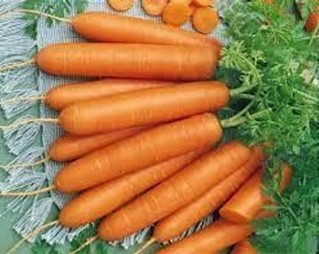Bolero Carrots
Daucus carota subsp sativus ‘Bolero’
Characteristics
- Type: Vegetable, Hybrid
- Zone: 3 – 10
- Roots: 7 – 8 Inches, Bright Orange
- Tops: 10 Inches
- Days to Maturity: 75
- Sun: Full Sun
- Soil: Loamy Sandy, pH 6.0 – 6.8
- Disease Resistance: Alternaria Blight and Powdery Mildew
- Tolerates: Frost
Culture
A heavy Nantes-type, Bolero produces cylindrical carrots with blunt ends and little tapering from top to bottom. It produces large, heavy tops which make them easy to pull from the ground during harvest. Bolero Carrot has a sweet taste and crunchy texture, which makes it great for raw consumption or cooking. It also holds well in storage. Harvested carrots (with or without tops) will hold in cold storage for several weeks. They mature quickly with smooth skins that need little peeling. Bolero can be harvested full size or as elegant slim baby carrots.
Carrots grow best when planted during the cooler times of the year in early spring or fall. Carrots prefer a soil temperature around 75 degrees for optimal germination. They will perform best when direct seeded. They are not a good crop to transplant.
Noteworthy Characteristics
Bolero carrots offer a great disease resistance package along with superb flavor and storage potential.
Problems
Click here for more information about disease issues and pests.
Uses
Excellent eating quality both fresh and after long-term storage. They can be blanched, frozen, and will retain texture and flavor well in the freezer.
